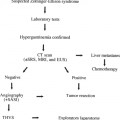
A Hematologist’s Perspective on the Treatment of Venous Thrombosis
Thrombosis of the venous vascular system has plagued humankind since their arrival, erect in posture, on earth. This pathologic problem is essentially unknown in quadrupeds. The first patient illustrated and described in detail with deep vein thrombosis (DVT) was published in the fifteenth century by the Duchess de Bourbonnoys.1 Thrombus formation within the venous system is a serious illness2 with the potential high risk for fatal pulmonary thromboemboli as well as the extensive chronic morbidity associated with the sequelae of thrombophlebitis, including constant painful edematous lower extremities resulting in venous hypertension, distortion of the cutaneous integument, hyperpigmentation, cutaneous ulceration, cellulitis, necrosis, and subsequent osteomyelitis (i.e., the postphlebitic syndrome). Although the precise frequency of the postphlebitic syndrome is unknown, it is common and in some published reports approaches 60%, despite conventional anticoagulation therapy. These pathologic features all result from venous insufficiency as a direct consequence of venous valvular damage with uncompensated valvular dysfunction.
Treatment of DVT, if it is to be successful, especially with respect to the chronicity of the problem, must prevent damage to and preserve normal function of the venous valves. If this can be accomplished, a therapeutic advance has been achieved. Within the past decade, advances have been achieved in the treatment of venous thrombosis. Several treatment modalities have become available.3 Currently, the questions arise of which one of these treatment regimens should be used, and if more than one therapeutic agent should be used, in what order they should be administered.
Treatment of central or peripheral DVT is difficult, complicated, long term in duration, cumbersome, and not completely satisfactory. Anticoagulation, although it has been used somewhat successfully for several decades, does not completely reverse the morbidity often associated with venous thrombosis. Anticoagulants heparin (either standard unfractionated or low-molecular-weight heparin), warfarin and its congeners, and the newer agents hirudin and hirulog all exert their beneficial effect, when optimally functional, by preventing additional thrombus formation or accretion of thrombus on preformed thrombotic material. When anticoagulation therapy is working perfectly and optimally, the existing thrombus or thrombi will decrease in size, retract, and, to a limited extent, can be altered by the body’s endogenous degradative fibrinolytic system. To a variable degree, this may result in a limited degree of restoration of venous blood flow, a decrease or disappearance of symptoms, and prevention of emboli; seldom, if ever, does venous valve function and venous hypertension return to normal. This undesirable incompletely treated situation predisposes to the postphlebitic syndrome and its consequences.
In totality, the optimal therapeutic effect of anticoagulant therapy is permissive survival of the affected venous network. The function of this surviving segment is suboptimal and severely limited. Patency of the afflicted venous segment is partial, flow is inadequate, and stasis frequently prevails. Clinically, the situation appears improved, but physiologically the degree of impairment is often severe. Functional reserve in the damaged but surviving venous network is severely reduced or absent, and all the predisposing factors for the postphlebitic syndrome dominate the situation.4,5 The intraluminal area remains obstructed to a considerable degree, and blood flow in the form of venous return may be far below normal. Perivascular tissue is not adequately drained, and the formation of edema fluid occurs. Because of the persistence of residual thrombus formation (present in 100% of patients treated with heparin6), the function of venous valves that normally prevents the backflow of blood is destroyed, providing an additional factor that encourages the formation of soft-tissue edema. Remedy of the situation is incomplete, and considerable pathology persists following the use of anticoagulants.
 Anticoagulation
Anticoagulation
A patient is ineligible for thrombolytic therapy if absolute contraindications exist, including an allergic reaction, active bleeding, recent central nervous system (CNS) stroke, hemorrhage, infarction, primary CNS tumor, or metastatic disease to the CNS. In such cases, the treatment of choice is intravenous heparin anticoagulation. This agent given intravenously provides immediate anticoagulation.
If it is decided that heparin should be used as the primary treatment, this agent (standard unfractionated heparin) should be administered in the following way. A baseline activated partial thromboplastin time (aPTT) and prothrombin time (PT) should be obtained. Heparin then should be given at a dose of 5000 U (if patient is 100 kg or heavier, 10,000 U) in a bolus manner in a volume of 20 to 30 mL (0.85% NaCl or D5W) by intravenous push over 5 to 10 minutes. The patient then should be connected to an infusion to deliver heparin at 1000 U per hour. Six hours later, the aPTT should be measured on blood taken from the contralateral side of the body to where heparin is being infused. The aPTT should be prolonged to 1.5 to 2.0 times the baseline normal value. The results of the aPTT should be used to adjust the dose of heparin until the therapeutic range is achieved. The aPTT should be measured every 12 hours until this is achieved. Then the aPTT should be measured every 24 hours for the duration of heparin infusion.
For primary treatment of DVT, heparin should probably be given intravenously for 7 to 10 days. In this situation, warfarin should be started on day 5 or 6. When therapeutic (PT-INR 2.5–3.5 target 3.0) range is reached, heparin should be discontinued. If this is a first-time event, the extent of disease is minimal to modest, and the patient is ambulatory, warfarin can be started soon after the institution of heparin. It is important first to identify the dose of heparin needed to treat the patient adequately and to maintain aPTT values at stable, steady levels. It is also important to ensure that no invasive procedures are planned. If it is possible that invasive procedures may be needed, warfarin should not be initiated until such procedures are no longer under consideration.7,8 Once warfarin is given to the patient, the aPTT is unreliable because the aPTT is unpredictably and erratically altered (usually prolonged) and in this situation the aPTT cannot be used reliably to regulate the dose of heparin needed. In this situation, when a stable dose of heparin is identified, warfarin can be instituted. When the PT is in the therapeutic range, heparin should be discontinued.
When receiving warfarin, the dose is guided by the PT, which should be prolonged to a ratio (PTR) of 1.5 to 2.0 or an International Normalized Ratio (INR) of 2.5 to 3.5 with a target of 3.0. Initially, the PT needs to be measured daily, and when a dosing schedule has been identified to maintain the patient in the therapeutic range, the PT can be measured once weekly. If the dose is stable, the interval for measuring the PT can be widened to every 3 to 4 weeks. The interval between measurements of the PT should not be greater than every 4 weeks at any time the patient is receiving warfarin.7,8
If thrombolytic therapy has not been used, warfarin anticoagulation should be continued for 4 to 6 months. If, at the end of this time, the patient remains only minimally mobile and debilitated and is experiencing one or more underlying diseases, warfarin may need to be administered longer.
A number of different regimens have been used when warfarin anticoagulation is administered: two-step warfarin, midpoint PT warfarin; however, these techniques are cumbersome and have not been demonstrated to be more beneficial to the patient than the standard technique of warfarin administration and monitoring.
 Thrombolytic Therapy
Thrombolytic Therapy
The availability of thrombolytic therapy followed the observation by microbiologist W.S. Tillett that beta-hemolytic streptococci elaborated a substance that activates in the human body the fibrinolytic system. The ensuing thrombolytic agents have offered an alternative to conventional management of venous thrombosis with anticoagulants, warm compresses, extremity elevation, and bed rest.9–12 Thrombolytic agents provide the unique possibility of inducing dissolution and resolution of the preformed thrombus (i). When these steps are successful, there is prompt restoration of venous blood flow, elimination of the source of pulmonary emboli, reduction in venous hypertension, restoration of normal lymphatic drainage, and preservation of venous valve function. Review of all published prospective, randomized, blinded, and appropriately controlled studies comparing heparin anticoagulation with thrombolytic therapy in the treatment of upper- and lower-extremity DVT revealed that the success rate (resolution of thrombus formation, restoration of patency and blood flow, and preservation of venous valve function) with thrombolytic therapy varies from 55 to 85%, contrasted with 10% or less with heparin anticoagulation. The resultant effects of the alterations induced by thrombolytic therapy avoid the problem of the postphlebitic syndrome and its undesirable consequences. In contrast to the situation after anticoagulation therapy, residual thrombus formation is not a feature of thrombolytic therapy.13–19
Stay updated, free articles. Join our Telegram channel

Full access? Get Clinical Tree



